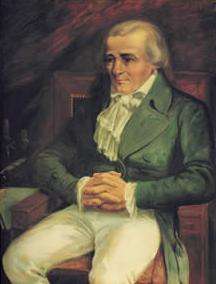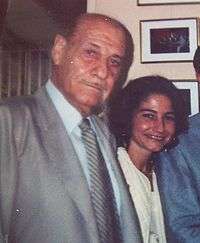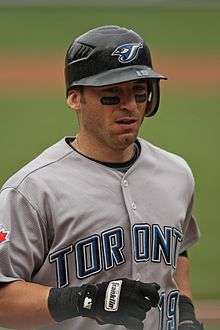Italo-Venezuelans
| ||||||||||
| Total population | ||||||||||
|---|---|---|---|---|---|---|---|---|---|---|
|
30,000-126,000 citizens according to the National Census 5–6% of Venezuela's population[3] | ||||||||||
| Regions with significant populations | ||||||||||
| Greater Caracas, Valencia, Maracay, Barquisimeto, Maracaibo, Barcelona-Puerto La Cruz, Margarita Island, Ciudad Guayana, Acarigua-Araure and Mérida | ||||||||||
| Languages | ||||||||||
| Italian, Spanish | ||||||||||
| Religion | ||||||||||
| Roman Catholic | ||||||||||
Italian-Venezuelans are Venezuelan citizens of Italian descent. The word may refer to someone born in Venezuela of Italian descent or to someone who has emigrated to Venezuela from Italy. Among European Venezuelans, Italians are one of the largest groups of immigrants to settle in the country.
History
Before the discovery of huge deposits of oil in Venezuela, during the first half of the 20th century, the emigration of Italians to Venezuela was limited. A number of Italians (among them Agostino Codazzi) moved to Venezuela from Italy during the colonial times and the Simón Bolívar era. In the second half of the XIX century there was a small amount of Italians and their descendants, who were able to reach important levels inside the Venezuelan society, like Luis Razetti.
In the 1940s and 1950s the Venezuelan President Marcos Pérez Jiménez promoted European immigration to his depopulated country, and more than 300,000 Italians emigrated to Venezuela (although many later returned to Italy).
The Italians in the 1961 Venezuelan census were the biggest European community in Venezuela (ahead of the Spanish). In 1976 the "Dirección de Estadísticas" of Venezuela registered 210,350 Italians residents and 25,858 Italians "naturalised" (that obtained Venezuelan citizenship).[4] In 2001, 126,553 Italians were living in Venezuela.[5]
Marisa Vannini calculated that in the 1980s Italian-Venezuelans made up almost 400,000 of Venezuela's population, including second-generation descendants of immigrants. The Italian language in Venezuela is influencing Venezuelan Spanish with some modisms and loanwords and is experiencing a notable revival between the Italian-Venezuelans of second and third generation.
Santander Laya-Garrido estimated that the Venezuelans with at least one grandparent from Italy can be nearly one million at the beginning of the 21st century (like the former president of Venezuela, Raul Leoni, whose grandfather was an Italian mason refugee of the 19th century).
Currently, Italian citizens residenced in Venezuela are reduced to less than 50,000 due mainly to demographic mortality and to their return to Italy (because of a Venezuelan political and economic crisis in the 2000s).[6] The Ambassador of Italy in Venezuela, estimated that 5-6% (1,44 to 1,73 million) of the current Venezuelan population is of Italian origin.[3]
| Italian population in Venezuela | ||||
|---|---|---|---|---|
| Census Year | Venezuelan population | Italian population | % Italians over foreigners | % Italians over total population |
| 1881 | 2,075,245 | 3,237 | 6.6 | 0.15 |
| 1941 | 3,850,771 | 3,034 | 6.3 | 0.07 |
| 1950 | 5,091,543 | 136,705 | 31.1 | 3.01 |
| 1961 | 7,523,999 | 113,631 | 24.6 | 1.51 |
| 1971 | 10,721,522 | 213,000 | 22.3 | 1.99 |
| 2001 | 23,054,210 | 49,337 | 4.86 | 0.21 |
Professions
Initially, agriculture was one of the main activities of the Italian community in Venezuela. In the 1950s, entire Italian families were moved from Italy to special agricultural areas, like the "Colonia Turén" of the Portuguesa region.[7]
However, most Italians concentrated in commercial, building and services activities during the second half of the 20th century. In those sectors, Italians reached top positions in the Venezuelan economy.
The community's main Italian newspapers are Il Corriere di Caracas and La Voce d'Italia , both published in the Capital, and the main Italian school is the Agustin Codazzi of Caracas (with courses from elementary to high school). Since 2002, the Italian government has become the promoter for a provision which makes it mandatory to teach the Italian language as a second language in a consistent number of public and private schools within Venezuela.[8]
Most of the Italian community in Caracas but even in the rest of Venezuela followed Deportivo Italia football club, as its own representative team.[9]
Indeed, the Italian-Venezuelans have obtained significant results in the contemporary society of Venezuela. The Italian Embassy calculates that 1/4 of the Venezuelan industries, not related to the oil sector, are directly or indirectly owned and/or managed by Italian-Venezuelans.[10]
In the Italian community, actually one of the most important in Venezuela, there are Presidents of Venezuela (like Jaime Lusinchi and Raúl Leoni), entrepreneurs (like ing. Delfino, who with his "Constructora Delpre" made in Caracas the tallest skyscrapers of South America: Parque Central Complex), managers (like Pompeo D'Ambrosio), sportsmen (like Johnny Cecotto), artists (like Franco De Vita), beauty pageants (like Daniela di Giacomo and Viviana Gibelli), and many others personalities.
One winner of the title Miss Venezuela was born in Italy: Maria Antonietta Cámpoli [11] in 1972 (later she represented Venezuela in the Miss Universe, where she was the runner-up).
Main Italo-Venezuelan Institutions and Associations
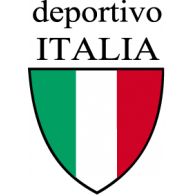
- Asociación Civil "Agustin Codazzi" in Caracas
- Casa de Italia in Caracas, Maracay, Valencia, Ciudad Bolívar
- Centro Italo-Venezolano in Caracas, Barcelona, Maracaibo, Valencia.
- Club Social Italiano in Puerto La Cruz, Acarigua
- Deportivo Italia Football Club
- Instituto Italiano de Cultura in Caracas[12]
- Camera di Commercio, Industria ed Agricoltura Venezuelana-Italiana in Caracas
- Regional Associations of Italians in Venezuela[13]
- Genealogía Italiana en Venezuela http://www.italven.org
Education
The Colegio Agustín Codazzi in Caracas is an overseas Italian school recognized by the Ministry of Foreign Affairs of Italy.[14]
There are also multiple Italo-Venezuelan schools in the country:[15]
Caracas:[15]
- Colegio San Francisco d'Assisi
- Colegio Nuestra Señora de Pompei
- Colegio Amerigo Vespucci
- Collegio San Marco Evangelista
- Collegio Patria
- Colegio Bolivar y Garibaldi
Eastern Venezuela:[15]
- Collegio Maria Montessori in Ciudad Bolivar
- Collegio A. de Marta in Puerto La Cruz
Western Venezuela:[15]
- Collegio R. C. Agazzi in Barquisimeto
- Collegio San Pedro in Barquisimeto
- Collegio Juan XXIII in Maracay
Notable Italian-Venezuelans
- Filippo Salvatore Gilii - Italian Jesuit priest and linguist who lived in the Province of Venezuela before the War of Independence.
- Juan German Roscio - Chief architect of the Venezuelan Constitution of 1811.
- Agostino Codazzi - Geographer, cartographer, military officer and governor.
- Primo Casale - Composer, conductor and violinist.
- Carlo Castelli - Italian military that fought with Simon Bolivar in the Venezuelan War of Independence.
- Renny Ottolina - Artist, TV anchor, politician.
- Jaime Lusinchi - President of Venezuela (1984–1989).
- Raul Leoni - President of Venezuela (1964-1969)
- Pompeo D'Ambrosio - Financial manager and vice-president of bank.
- Luis Razetti - Surgeon, considered the driving-force behind the Renaissance of Venezuelan Medicine.
- Leon Croizat - Biologist.
- Johnny Cecotto - Sportman (moto & race cars).
- Daniela Di Giacomo - Miss International 2006.
- Graziano Gasparini - Architect and art historian.
- Iván Palazzese - Sportman (moto).
- Franco De Vita - Artist, singer, composer and pianist.
- Marco Scutaro - International baseball player.
- Francisco Cervelli - Major League Baseball player.
- Gianfranco Di Julio - Soccer player.
- Maria Antonieta Campoli - Miss Venezuela 1972.
- Sandro Finoglio - Mister World 1998.
- Mario Masciulli - Military engineer.
- Rosario Marciano - Pianist and writer.
- Massimo Margiotta - Former footballer.
- Patricia Salerno- Biologist.
- Vicencio Scarano Spisso - Politician.
- Lele Pons - Internet personality and actress.
- Alejandro Ghersi - Musician commonly known as Arca (musician).
Geographical distribution and origin
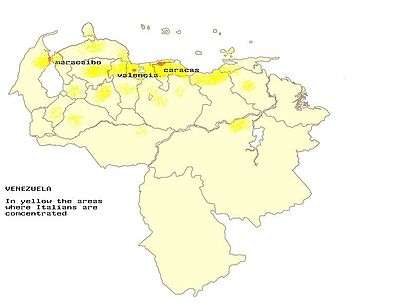
The Italians who migrated to Venezuela came mainly from the regions of South Italy, like Abruzzo, Campania, Sicily, and Apulia, but there were also migrants from the north, such as from Emilia-Romagna and Veneto.
The Italian Consulate in Caracas stated[16] that in 1977 - of 210,350 Italians residents in Venezuela - 39,855 were from Sicily, 35,802 from Campania, 20,808 from Abruzzi, 18,520 from Apulia, 8,953 from Veneto, 7,650 from Emilia-Romagna and 6,184 from Friuli – Venezia Giulia.
The Italians are concentrated mainly in the north-central region of Venezuela around Caracas. The Consulate stated that in the same 1977 there were 98,106 Italians in the Distrito Federal of Caracas, 39,508 in Miranda State, 14,203 in Maracaibo, 12.801 in Aragua State and 8,104 in Carabobo State, as well as 66 in the Amazonas equatorial region.
In the 2000s, it was determined that nearly 90% of the Italo-Venezuelans were concentrated in the northern coastal section of Venezuela facing the Caribbean sea. Approximately 2/3 of them are residents of the metropolitan areas of the three main Venezuelan cities: Caracas, Maracaibo and Valencia.
There is also a considerable number of Italian residents that live in the city of San Cristóbal and in the Andes region.
Demographics
Population
.png)
States with the highest proportions of Italian-born population tend to be those of the North-central coastal area (Capital and Central Region), the Andean Region (Mérida) and the Insular Region.
At the 2011 census, this was the breakdown of Italian-born population by state
| State | Italian-born Population | Percentage |
|---|---|---|
| 19 | 0.013 | |
| 1,116 | 0.0798 | |
| 63 | 0.0137 | |
| 2,492 | 0.1537 | |
| 351 | 0.0434 | |
| 885 | 0.0631 | |
| 5,792 | 0.3003 | |
| 3,011 | 0.1349 | |
| 93 | 0.0216 | |
| 18 | 0.01 | |
| 355 | 0.0373 | |
| 20 | 0.9438 | |
| 582 | 0.0785 | |
| 1,449 | 0.082 | |
| 558 | 0.678 | |
| 8,263 | 0.3122 | |
| 494 | 0.0566 | |
| 915 | 0.1886 | |
| 851 | 0.0986 | |
| 296 | 0.038 | |
| 338 | 0.0291 | |
| 349 | 0.051 | |
| 557 | 0.1591 | |
| 339 | 0.0566 | |
| 1,645 | 0.0446 | |
| Total Venezuela | 30,901 | 0.1137 |
See also
References
- ↑ http://www.ine.gov.ve/documentos/Demografia/CensodePoblacionyVivienda/pdf/nacional.pdf
- ↑ Bevilacqua, Piero; Clementi, Andreina De; Franzina, Emilio (2001). Storia dell'emigrazione italiana (in Italian). Donzelli Editore. ISBN 9788879896559.
- 1 2 http://www.correodelorinoco.gob.ve/tema-dia/embajador-italia-caracas-asegura-que-sistema-electoral-venezolano-es-confiable/ "...el diplomático calcula que 5% o 6% de la población venezolana actual tiene origen italiano."
- ↑ Ministerio de Fomento (Dirección General de Estadísticas y Censos nacionales). Décimo Censo nacional de 1971. Caracas
- ↑ Bevilacqua, Piero; Clementi, Andreina De; Franzina, Emilio (2001). Storia dell'emigrazione italiana (in Italian). Donzelli Editore. ISBN 9788879896559.
- ↑ http://www.annoticoreport.com/2007/07/italian-venezuelans-worried-by-chavez.html
- ↑ http://www.chiesacattolica.it/pls/cci_new/bd_edit_doc_txt.edit_documento?p_id=8045 Colonia Turen (in Italian)
- ↑ http://www.ambcaracas.esteri.it/Ambasciata_Caracas/Menu/ Section:Cultural cooperation
- ↑ Website of Deportivo Italia (in Spanish)
- ↑ http://www.esteri.it/MAE/EN/Politica_Estera/Aree_Geografiche/Americhe/
- ↑ Photo of Maria Antonietta Campoli
- ↑ http://www.iiccaracas.esteri.it/IIC_Caracas
- ↑ http://www.concapeligna.it/L'ITALIAnelMONDO/allESTERO/associazioniitaliane/associazioni/venezuela.htm
- ↑ "SCUOLE PARITARIE ITALIANE ALL'ESTERO" (Archive). Ministry of Foreign Affairs (Italy). p. 5/6. Retrieved on November 20, 2015.
- 1 2 3 4 "Informazioni utili nel Paese" (Archive). Ministry of Foreign Affairs of Italy (Farnesina). Retrieved on November 21, 2015.
- ↑ Consolato Generale d'Italia a Caracas.Rapporto del Consolato per il Ministero Affari Esteri di Roma. Anno 1978
- ↑ Censo 2011 - INE
External links
Bibliography
- Cassani Pironti, Fabio. Gli italiani in Venezuela dall’Indipendenza al Secondo Dopoguerra. Roma, 2004
- Favero L. e Sacchetti G. Un secolo di emigrazione italiana:1876 - 1976. Centro Studi Emigrazioni. Roma, 1978
- Mille, Nicola. Veinte Años de "MUSIUES". Editorial Sucre. Caracas, 1965
- Santander Laya-Garrido, Alfonso. Los Italianos forjadores de la nacionalidad y del desarrollo economico en Venezuela. Editorial Vadell. Valencia, 1978.
- Vannini, Marisa. Italia y los Italianos en la Historia y en la Cultura de Venezuela. Oficina Central de Información. Caracas, 1966
